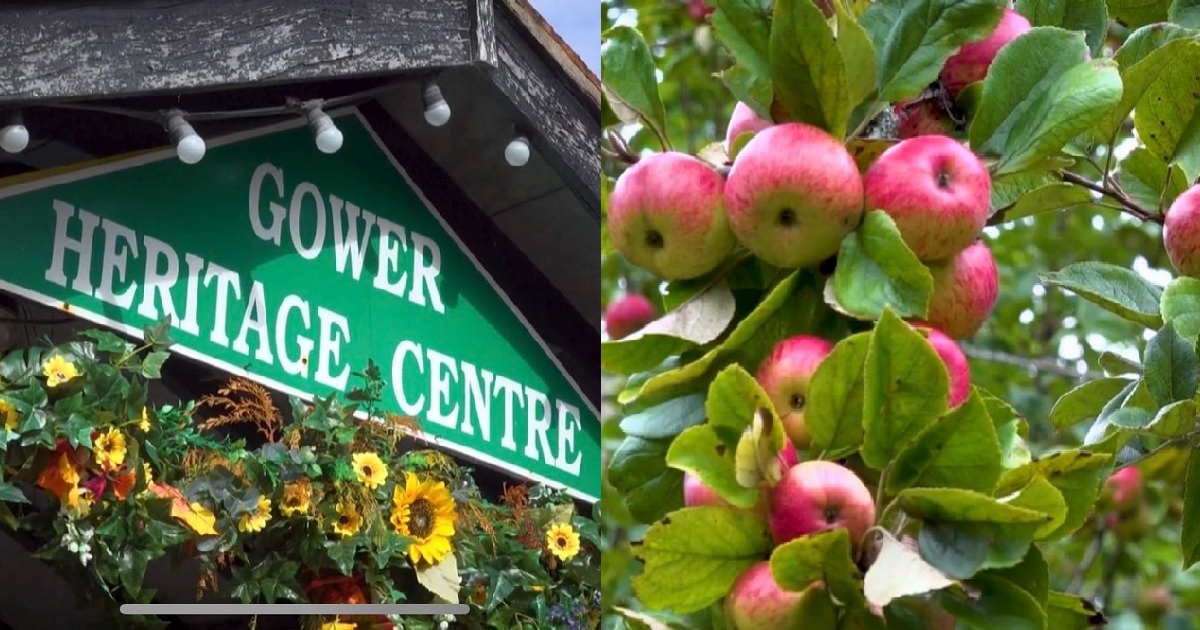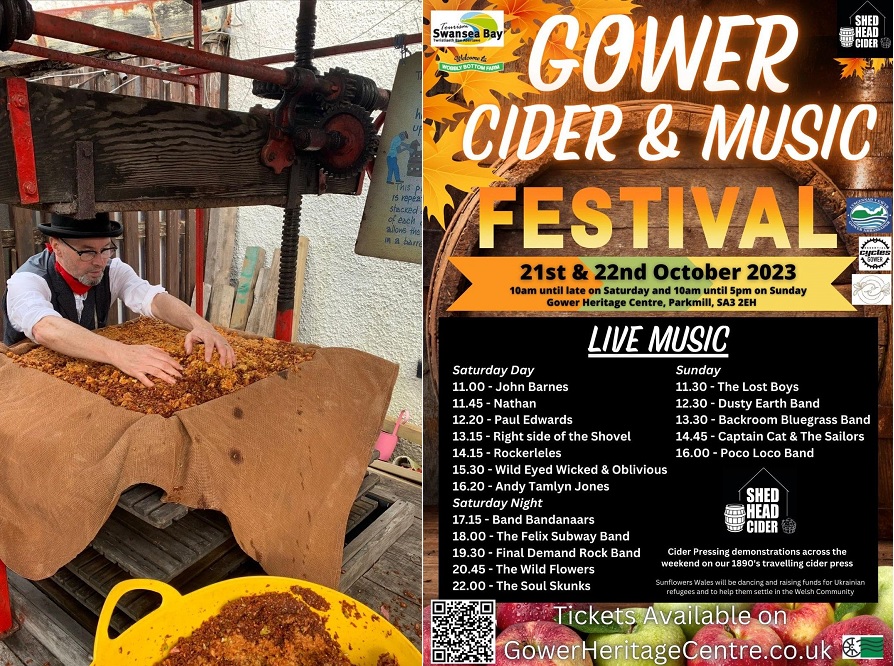Autumn cider and music festival returns to Gower Heritage Centre

It’s a hard life when part of your job is to grow apples, press apples into juice and cider, and then hold festivals for everyone to eat Welsh produce and drink the results.
This is the lot of Richie Saunders of Shed Head Cider and the team at the Gower Heritage Centre, in Parkmill.
The 12th century cornmill has a large orchard on its plot next to the south Gower road, and with apple season in full swing, the team is preparing to host its hugely popular autumn Cider and Music festival this weekend.
From 10am on Saturday through til Sunday afternoon there will be a host of well-known local bands and musicians with music ranging from folk to ska, ukelele to bluegrass, solo singer-songwriters to big band sounds.
There will be a range of stalls selling Welsh produce makers and demonstrations of an 1890s apple press in action.
There will also be traditional dancing from Sunflowers, the group which supports people from Ukraine who have settled in Wales.
The apple year
The apple year is very much a central to life and events down at the old mill, with wassailing in the new year to bring light and life to the winter orchard and encourage a bountiful harvest, a cheese and cider festival in May to herald in the summer and then a cider and music festival in October to warm up the autumn.
The orchard is home to a variety of mainly cider apples such as Dabinett, Yarlington Mill and Kingston Black. Situated in the Parkmill valley, the trees are well sheltered from the cold Gower winds and benefit from a microclimate.
Through September the team harvest the apples, wheelbarrow them across the carpark to the mill, get them washed and sorted before preparing to start pressing in October.
In a video to promote the event, Richie, the artisan behind what has become one of the highlights of the Gower food calendar, explains the basics of the successful and sustainable apple business in the heart of an ancient and beautiful Gower valley.

On site
Richie says: “There’s nothing added to the cider that we make here. It’s fermented in natural Gower yeasts and then it’ll be a nice long fermentation in traditional oak casks.
“There’s no transportation or lorries or anything like that. We wheelbarrow it from here to the mill, and then it stays on site, is pressed on site, then fermented on site and the cidermakers drink it on site.
“We celebrate the big press day with the October cider festival and there’s plenty of music involved in that as well, which is really important.
“Next step with the pulp, we place it in hessian sacks and wrap it up into parcels with wooden slats: put one slat first and then the hessian sack full of this apple pulp. Then we put another wooden slat on the top.
“It’s called the ‘building the cheese’ and then when we have it built up to about 8 or 10 layers, we start putting the weight of the press on to the ‘cheese’ – that’s done by hand and is really hard work. This is how we’ve got a good team around just to do this.
“We wind the wheel down and put in over a ton of weight until the juice runs through the bottom of the press into buckets.
“I personally think this is the part that everybody really looks forward to where the juice is finally running from full press to the bucket and then everyone’s waiting around to try that.
“Once everybody’s had a juice, we get a good idea how the cider is going to turn out, especially with the sweetness in the apple. The next step in the process is to put it into the barrel.”
In addition to these events, visitors will also be able to see the historic mill, visit the poultry centre, book onto a heritage workshop or get gifts and refreshments.
To buy tickets and to find out more about the cider festival, half term and Halloween events, artisan workshops and the on-site crafts and food outlets visit the website.
Support our Nation today
For the price of a cup of coffee a month you can help us create an independent, not-for-profit, national news service for the people of Wales, by the people of Wales.




